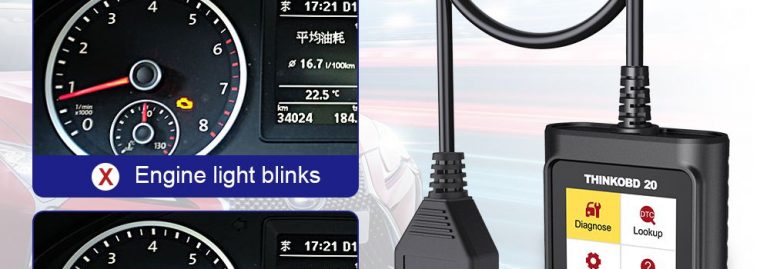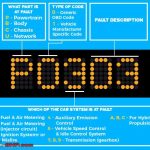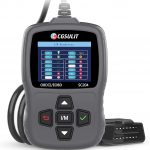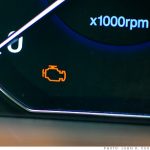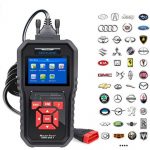If your car is displaying one of the check engine code meanings, here’s what they mean. These codes are often associated with powertrain issues, such as fuel or air metering systems, ignition and emissions systems, and speed or idle control. In some cases, they can also be related to a computer/electronics problem. You can also see a code indicating that the transmission has a problem.
P0128
What are the P0128 check engine code meanings? This trouble code sets off when the temperature of the engine coolant is not high enough. The thermostat blocks the flow of coolant to the radiator when the engine is cold and opens it once the engine is running. This malfunction can happen for several reasons, such as a leak in the seal, a thermostat that is stuck open, or a combination of these factors.
This code may also mean that the oil in the engine is contaminated. While the actual problem is not as severe as that, a vehicle that has the problem should be taken to a mechanic. Performing the diagnostics on your vehicle as soon as you notice the P0128 code may save you a lot of money in the long run. This is because early diagnosis can help you avoid further damage to your vehicle.
The most common mistake that drivers make when troubleshooting a P0128 check engine code is simply replacing the thermostat. This will likely solve the problem temporarily but will cause worse issues over time. This could lead to water getting into the oil, causing a deterioration of the engine’s performance and damage to the engine. Hence, it’s important to check the engine thoroughly before tackling the problem.
The most common cause of the P0128 code is a faulty thermostat. Despite its low severity, drivers should check for these two components to eliminate the code. They may be the culprit in your vehicle’s p0128 check engine code. Replacement will save you money and troubleshooting will take just minutes. It’s best to have your vehicle’s PCM diagnosed if you want to get the most out of it.
P0174
A simple way to understand the P0174 check engine code is to learn the meaning of the error code. When this code comes up, it means that the bank that is giving you the error is too lean. Bank 2 refers to the side of the engine that does not have cylinder #1. If this error code continues to come up, you may need to repair the fuel system. To determine what the problem is, read the description that comes with the code.
The reason why you might have gotten the code is because of an issue with the air-fuel mixture in your vehicle. The O2 sensors detect this issue, indicating that the air-fuel mixture is too lean. This causes poor vehicle performance. Diagnostic trouble codes help you identify the source of the engine problem quickly, so you’ll be able to fix the problem as soon as possible. To prevent this error from showing up, learn the meaning of P0174 check engine code.
If this error message continues to show up on your dash, you should have your car checked immediately. Most vehicles have a P0174 code when there’s a problem with their fuel system. There are several possible causes. Some common ones include dirty fuel and air leaks. Fuel pumps may also be malfunctioning. However, the most common cause of P0174 is a vacuum leak. When this happens, the air will bypass the mass air flow sensor. This excess air bypasses the mass air flow sensor, which sends its data to the ECU.
A lean condition occurs when the fuel-air ratio is out of whack. This can be caused by either too little or too much air. The main problem is in bank two, opposite the #1 cylinder. P0171 and P0174 are the main error codes for lean conditions. When your engine is too lean in bank two, you should take it to a professional for further diagnosis. These codes are the most common causes of P0174 code meanings.
P0335
If you’ve noticed that your car’s check engine light is on and you have a P0335 code, you may be wondering what it means. This code indicates a number of different issues, and the symptoms vary from vehicle to vehicle. Some cars don’t even start, while others run poorly. Other cars experience a drop in engine power or torque, while others stutter and have forceful idles. The symptoms depend on what’s causing the issue, but they are all signs of P0335 trouble.
The reason why your vehicle has this trouble code is that the PCM is having problems reading the crankshaft position sensor. This sensor is located on the crankshaft and measures the RPM of the engine. The PCM uses this information to control the engine’s performance. This sensor is located near the fuel injector and monitors engine speed. The PCM then changes the voltage to indicate the problem. Typically, if you experience this code, you should visit a mechanic as soon as possible.
A P0335 check engine code means that your car has a serious electrical or mechanical failure. You should never drive a car with a P0335 error code until it’s repaired. It could be caused by a faulty sensor, broken timing chain, or a broken ECM. In any case, you should have your car repaired as soon as possible to prevent any further damage to your car. This code may also cost you a fortune to repair if left unchecked.
Another common cause for this trouble code is the crankshaft. The problem is not necessarily with the crankshaft, but rather with the relays. The reluctor ring and crankshaft position sensor are responsible for determining the voltage. If these relays are faulty, the signals will not be sent to the ECU. This interrupts the signals, resulting in the P0335 error code. If you are wondering what it means, consider hiring a mechanic for assistance.
P0430
If you’re having trouble driving your car, you might have noticed the P0430 check engine code. While the general meaning of the code is the same as that of the p0420 trouble code, the P0430 indicates a specific problem with the emissions system. The engine’s catalytic converter is the part that converts carbon monoxide into harmless water vapor and carbon dioxide. A special part of the exhaust system called Bank 2 monitors this conversion. If you notice this code, you’ll want to take your vehicle to a mechanic and get it fixed.
The catalytic converter is one of the most common causes of this code. It is located on the bank2 side of your engine block. If your car is experiencing the P0430 code, you need to replace the catalytic converter. If this does not work, you may need to replace the entire catalytic converter. You should also replace the catalytic converter if it’s leaking. If you’re still unsure of what this code means, you can look up your manual or ask your mechanic.
Another possible cause of this P0430 code is a malfunction of the catalytic converter. It is responsible for reducing emissions and improving fuel efficiency. When it fails, this component can cause misfires. A catalytic converter is a vital part of your car’s engine because it reduces emissions. Bad spark plugs can also cause this code. This problem is not easily solved, however. If you can’t figure out what’s causing your vehicle to show the P0430 code, the best option would be to get your car serviced immediately.
Regardless of the cause, the P0430 check engine code is indicative of a specific problem. If you can find out what it is, you can repair the vehicle yourself. It can be costly, but the cost of repairing it will likely be less than you’d spend on the repair. Chilton and ALLDATA repair manuals are excellent resources for diagnosing and fixing your car. While the method will vary depending on the vehicle model, it should help you fix your car.
P0011
If you’ve recently noticed your check engine light is flashing, you should know the meaning of P0011 check engine code. This trouble code is related to a timing issue that affects the variable valve timing (VVT) component of your car’s engine. During this code’s diagnosis, you should be able to check whether the camshafts are seated correctly and are properly in their proper positions. This code can also result in the engine running rough or stalling.
The most common cause of this trouble code is a problem with the camshaft timing. In a vehicle with variable valve and camshaft timing, a malfunction in this area can lead to the engine failing to perform as it should. When this happens, the engine controller sends an ON/OFF pulse duty to the intake timing control, which controls the intake valve to increase output speed and torque. The problem can be caused by a solenoid failure, or the oil control solenoid might have a stuck position.
The cause of a P0011 check engine code can be easily resolved. To reset the fault code, first make sure the engine is getting enough oil. Changing the oil and filter may solve the problem, or repairing or replacing the bank 1 intake camshaft can resolve the issue. Alignment of the timing chain can also prevent this code from appearing. So, what are P0011 check engine code meanings?


